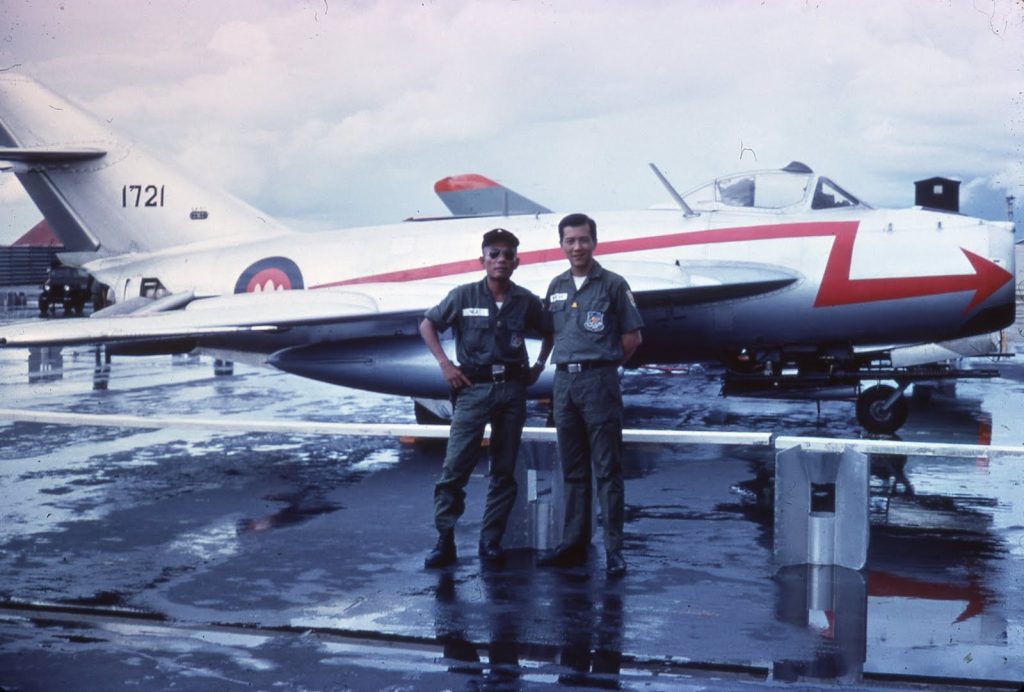On October 30, 1975, Foreign Minister Ieng Sary of Democratic Kampuchea visited Bangkok for talks on establishing normal relations between Thailand and Cambodia. His trip lasted from Oct. 28-Nov. 1. A joint communiqué stated that the two countries would exchange ambassadors at a mutually convenient date would respect each other’s sovereignty and territorial integrity and abstain from interference in each other’s internal affairs would not allow foreign military bases on their soil and would establish close economic and commercial co-operation.
The Thai Foreign Minister, Major-General Chatichai Choonhavan, said on Nov. 2 that as a first step towards diplomatic and trade relations liaison offices would be established on the border.
On October 31, 1922, Norodom Sihanouk was born in Phnom Penh. He became the King of Cambodia in 1941 after the death of his grandfather.
On November 1, 1976, Democratic Kampuchea’s Agriculture Minister Non Suon and more than two hundred of his associates from various ministries, the army and the party apparatus had been arrested. They joined other well-known Khmer communists with strong links to Vietnam, such as Keo Muni, Keo Meas and Nei Sarann who had been detained in the weeks before. This was the beginning of the Pol Pot purges, which aimed to remove any potential rivals from the communist government and increased tensions between former allies in Hanoi.
On November 2, 1960, a flurry of US diplomatic cables were sent discussing ‘The Cambodian Situation’.
“SUBJECT: The Cambodian Situation
Attached are the principal recent messages bearing on the Cambodian situation.1 The view that emerges from the messages from Bangkok [Page 170]and London is that Sihanouk’s outbursts are part of a carefully calculated strategy. The theories range from the view that he is seeking an accommodation with the Communists because he believes that the U.S. is not going to protect SEA against the Communists to the hypothesis that he is seeking to scare SEATO off from introducing forces into Viet Nam because he fears that SEATO contemplates actions that will compromise Cambodian neutrality.
The FE Bureau is of the view that his statements are not part of some carefully conceived plot or strategy, but a typical [less than 1 line of source text not declassified] reaction to outside criticism. The Bureau believes that a policy of promoting calm is the right one. The release today by Thailand of a white paper on Thai-Cambodian relations is not likely to further this policy.2 I suggested about a week ago that, since it is our view that Sarit bears a considerable measure of the responsibility for the Thai-Cambodian situation, we ought to do some rather tough talking with him. I was informed that a telegram along these lines had been killed by Alexis Johnson on the grounds that the Thais were adequately informed of our Views. Sihanouk’s attack on the U.S. may make such a démarche more difficult, but it also makes it more necessary. Otherwise the Thais may think that the situation has given them greater freedom to attack Sihanouk.
It seems to me that it is quite possible to construct a reasonably accurate picture of Sihanouk’s state of mind. We know that he is a [less than 1 line of source text not declassified] individual with a deep sense of [less than 1 line of source text not declassified] insecurity [less than 1 line of source text not declassified]. He is terribly sensitive to criticism and to the possibility that the traditional enemies of Cambodia, Thailand and Viet Nam are plotting against him. He has, in addition, some of the usual feelings of leaders of newly independent nations toward the U.S. as the most powerful representative of the former imperialist powers.” Read Full cables HERE
On November 2, 1984, Roland Joffé and David Puttnam’s The Killing Fields was released. The movie later won 3 Oscars.

On November 3, 1964, the Cambodian government received military assistance (two MIG-17 fighter planes, 1276 artillery pieces, eight anti-aircraft guns) from the Soviet Union.

On November 3, 1978, the Treaty of Friendship and Cooperation was signed between Vietnam and the Soviet Union, which guaranteed vital Soviet military aid in the scenario that China intervened in the border conflict taking place between Cambodia and Vietnam. Later in the month, a command and control headquarters was established for the planned invasion of Kampuchea, with Senior General Lê Đức Anh taking full control of PAVN units along the border areas. The Vietnamese government drafted 350,000 men into the military to replace earlier losses and augment its units along the border. While the new recruits were completing training, ten divisions were deployed to the border regions of Long An, Đồng Tháp and Tây Ninh Provinces. Vietnam also shifted three divisions based in Laos south towards the Laos-Kampuchea border.

On November 6, 2018, U.S. Ambassador to Cambodia William A. Heidt and Cambodia’s Minister of Culture, Her Excellency Phoeung Sackona, signed a joint statement recognizing the recent extension of the cultural property agreement between the United States and Cambodia during a ceremony at the National Museum of Cambodia in Phnom Penh.

